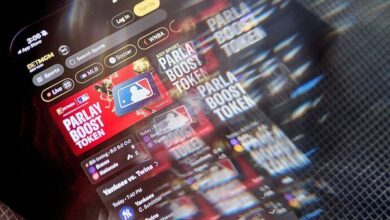How do you display a product in an exhibition?
Displaying a product at an exhibition involves several critical factors that can significantly impact your success in attracting and engaging customers. This comprehensive guide explores these factors, providing actionable insights to help you create an effective exhibition display.
1. Exhibition Stand Builders
Choosing the Right Stand Builders:
One of the first decisions you’ll face is selecting the right exhibition stand builder. These professionals specialize in creating custom exhibition stands tailored to your brand and product needs. When choosing a stand builder, consider their portfolio, experience with similar products or industries, and their ability to deliver within your budget and timeline.
Trade-offs:
Cost versus quality is a common trade-off when selecting stand builders. High-end builders may come with a premium price tag, but they often provide superior craftsmanship and innovative design that can set your display apart. On the other hand, opting for more budget-friendly options might save costs but could compromise on the visual appeal and durability of your stand.
Challenges:
Finding a stand builder who understands your brand’s identity and product positioning can be challenging. Communicating your vision clearly and ensuring alignment between your expectations and the builder’s capabilities are essential to avoid misunderstandings and delays.
2. Custom Exhibition Stands
Tailoring Your Stand Design:
Custom exhibition stands offer the advantage of uniqueness and flexibility. They can be designed to reflect your brand’s personality, highlight specific product features, and create a memorable experience for visitors. Consider incorporating interactive elements, digital displays, and engaging visuals to capture attention and encourage interaction.
Trade-offs:
Customization often requires more time and resources compared to off-the-shelf solutions. It’s crucial to balance the desire for a bespoke design with practical considerations such as setup time, transportation logistics, and storage requirements post-event.
Challenges:
Designing a custom stand that aligns with your brand image while meeting practical needs like ease of assembly and dismantling can be complex. Work closely with your design team and stand builder to ensure the final design achieves both aesthetic appeal and functional efficiency.
3. Exhibition Booth Design
Creating a Compelling Booth Layout:
The layout of your exhibition booth plays a pivotal role in how visitors perceive and interact with your products. Consider factors such as traffic flow, accessibility, and focal points within the booth. Strategic placement of products, signage, and seating areas can enhance visitor engagement and encourage longer dwell times.
Trade-offs:
Balancing an open, inviting layout with the need for privacy or demonstration areas can be challenging. Opting for a modular booth design can offer flexibility to adapt the layout based on specific event requirements and visitor demographics.
Challenges:
Achieving a harmonious booth design that integrates product displays, branding elements, and interactive spaces requires careful planning and attention to detail. Test the booth layout beforehand to identify potential bottlenecks or areas for improvement.
4. Trade Show Booth Builders
Partnering with Experienced Booth Builders:
Trade show booth builders specialize in creating functional and visually appealing displays that align with your marketing objectives. Look for builders with a track record of delivering high-quality booths within budget and schedule constraints.
Trade-offs:
Choosing between local versus international booth builders can impact logistics and costs. Local builders may offer convenience and better understanding of local regulations, while international builders might bring innovative design perspectives and broader logistical capabilities.
Challenges:
Coordinating with booth builders to ensure seamless execution from design concept to installation requires clear communication and project management. Define key milestones and deliverables early in the process to mitigate potential delays or misunderstandings.
5. Trade Show Exhibit Design
Designing Engaging Exhibit Experiences:
The design of your trade show exhibit should align with your brand messaging and product positioning. Incorporate storytelling elements, multimedia presentations, and interactive demos to create a compelling narrative around your products.
Trade-offs:
Balancing design creativity with practical considerations such as budget constraints and venue restrictions is essential. Opt for scalable design elements that can be reused or repurposed across different exhibitions to maximize ROI.
Challenges:
Designing an exhibit that captures the essence of your brand while adhering to event guidelines and spatial limitations requires creative problem-solving. Collaborate with designers, marketers, and booth builders to brainstorm innovative solutions that resonate with your target audience.
6. Modular Exhibition Stands
Flexibility and Reusability:
Modular exhibition stands offer versatility and cost-effectiveness for businesses participating in multiple events. These stands can be easily customized, expanded, or reconfigured to accommodate varying booth sizes and event themes.
Trade-offs:
While modular stands offer flexibility, they may lack the bespoke design features of custom-built stands. Evaluate your exhibition schedule and long-term marketing strategy to determine whether modular stands align with your brand’s goals.
Challenges:
Ensuring seamless integration of modular components and maintaining consistent brand aesthetics across different configurations require meticulous planning and coordination. Invest in modular systems that prioritize durability, ease of assembly, and visual impact.
7. Exhibition Stand Design Ideas
Inspiring Design Concepts:
Explore innovative exhibition stand design ideas that resonate with your brand’s identity and audience preferences. Incorporate elements of sustainability, technology integration, and immersive experiences to differentiate your booth from competitors.
Trade-offs:
Pushing the boundaries of traditional design concepts may require additional resources and expertise. Balance creativity with practical considerations to ensure your design ideas are feasible within the constraints of time, budget, and event logistics.
Challenges:
Transforming creative concepts into actionable designs that align with logistical realities and regulatory requirements can present challenges. Collaborate with designers and technical experts to refine your ideas and create a standout exhibition experience.
8. Exhibition Stand Contractors
Selecting Reliable Contractors:
Exhibition stand contractors play a crucial role in managing the logistics and execution of your booth setup. Choose contractors with a proven track record of delivering projects on time and within budget, ensuring they understand your specific requirements and expectations.
Trade-offs:
Balancing cost considerations with the contractor’s reputation and capabilities is essential. Seek recommendations, review past projects, and obtain detailed quotes to make an informed decision that aligns with your budgetary constraints.
Challenges:
Coordinating with multiple contractors, including electricians, decorators, and logistics providers, requires effective project management and communication. Establish clear timelines, responsibilities, and contingency plans to mitigate potential risks and delays.
9. Trade Show Display Companies
Partnering for Success:
Trade show display companies offer comprehensive solutions for designing, building, and managing your exhibition presence. Evaluate their portfolio, client testimonials, and service offerings to select a company that aligns with your exhibition goals and budget.
Trade-offs:
Choosing between full-service display companies versus specialized service providers depends on your specific needs and budget allocation. Full-service providers offer convenience but may come with a higher price tag, while specialized providers offer expertise in specific areas like digital signage or interactive displays.
Challenges:
Ensuring seamless coordination between trade show display companies and your internal team requires effective communication and collaboration. Clearly define project milestones, deliverables, and performance metrics to monitor progress and ensure project success.
Conclusion
Effectively displaying a product in an exhibition requires careful planning, creativity, and collaboration with experienced professionals. By prioritizing factors such as stand design, booth layout, and contractor selection, you can create an engaging exhibition experience that attracts visitors, showcases your products effectively, and maximizes your return on investment. Remember to continuously evaluate and refine your exhibition strategy based on feedback and performance metrics to optimize future participation in trade shows and exhibitions.



